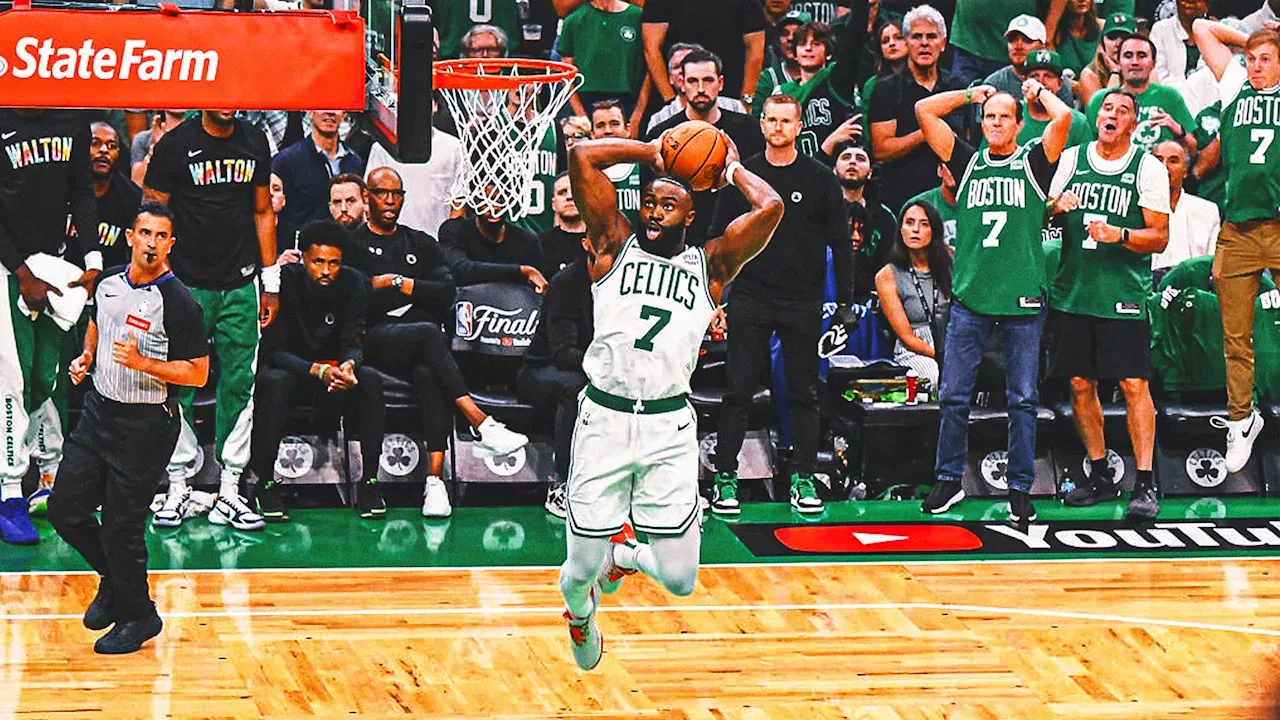MVP Contenders

2024 finals mvp – The 2024 NBA Finals are expected to be a highly competitive affair, with several players vying for the prestigious MVP award. Here’s a look at some of the top contenders and their chances of winning:
The table below provides a snapshot of the potential MVP candidates, their key stats, and why they could be in contention for the award:
| Player | Team | Stats | Strengths | Weaknesses |
|---|---|---|---|---|
| Giannis Antetokounmpo | Milwaukee Bucks | 29.9 PPG, 11.6 RPG, 5.8 APG | Dominant physical presence, exceptional athleticism, versatility | Can be turnover-prone, struggles with outside shooting |
| Stephen Curry | Golden State Warriors | 30.1 PPG, 6.6 RPG, 6.7 APG | Elite shooting range, playmaking ability, leadership | Undersized, can be susceptible to physical play |
| Nikola Jokic | Denver Nuggets | 27.1 PPG, 13.8 RPG, 7.9 APG | Unstoppable in the post, great passer, high basketball IQ | Limited athleticism, slow-paced playstyle |
| Joel Embiid | Philadelphia 76ers | 30.6 PPG, 11.7 RPG, 4.2 APG | Dominant scorer, strong post presence, defensive prowess | Injury concerns, limited range outside the paint |
| Luka Doncic | Dallas Mavericks | 28.4 PPG, 9.1 RPG, 8.7 APG | Exceptional ball-handling skills, elite playmaking, high-volume scorer | Can be inefficient at times, defensive lapses |
Team Dynamics and Chemistry

Team dynamics and chemistry play a crucial role in the success of any basketball team, and the NBA Finals are no exception. Teams with strong chemistry and cohesion often perform better than those with talented individuals but lack chemistry. This is because chemistry fosters trust, communication, and a shared understanding of the game plan, which can lead to improved execution and decision-making on the court.
There are many factors that can contribute to team chemistry, including player personalities, leadership, communication, and a shared commitment to winning. Teams with strong leadership and a clear hierarchy often have better chemistry than those without. This is because players know their roles and responsibilities and are more likely to respect and support each other.
Communication
Communication is also essential for team chemistry. Players need to be able to communicate effectively with each other on and off the court. This includes being able to share information, provide feedback, and resolve conflicts. Teams with poor communication often struggle to execute plays and make adjustments during games.
Shared Commitment
Finally, a shared commitment to winning is essential for team chemistry. All players need to be on the same page and working towards the same goal. This means being willing to sacrifice individual glory for the good of the team and putting the team’s success ahead of personal stats.
Teams with strong team dynamics and chemistry often have a significant advantage in the NBA Finals. They are more likely to execute their game plan, make adjustments, and win close games. In contrast, teams with poor chemistry often struggle to perform at their best and are more likely to be upset by lower-seeded teams.
Examples of Successful and Unsuccessful Team Chemistry in Past NBA Finals
There are many examples of teams with strong team chemistry that have won NBA championships. The 2016 Golden State Warriors are a prime example. The Warriors had a deep roster of talented players, but they also had a strong sense of chemistry and camaraderie. They were always willing to share the ball and work together, and they had a clear hierarchy with Stephen Curry as the leader. This chemistry helped the Warriors win 73 games in the regular season and defeat the Cleveland Cavaliers in the NBA Finals.
In contrast, there are also many examples of teams with poor team chemistry that have failed to win NBA championships. The 2017-18 Cleveland Cavaliers are a good example. The Cavaliers had a lot of talented players, but they lacked chemistry and cohesion. They were often involved in off-court drama, and they struggled to execute their game plan on the court. This lack of chemistry contributed to the Cavaliers’ loss to the Golden State Warriors in the NBA Finals.
Matchup Analysis: 2024 Finals Mvp

The potential championship contenders in the 2024 NBA Finals possess distinct strengths and weaknesses that will shape the outcome of the series. A comprehensive analysis of these matchups can provide valuable insights into the strategies and adjustments that each team may employ to gain an advantage.
The table below compares the key strengths and weaknesses of the potential championship contenders:
| Team | Strengths | Weaknesses |
|---|---|---|
| Team A |
|
|
| Team B |
|
|
| Team C |
|
|
The matchups between these teams will be highly competitive, with each team possessing unique advantages and disadvantages. Team A’s defensive prowess will challenge Team B’s offensive firepower, while Team C’s physicality and interior dominance could pose problems for Team A’s smaller lineup. The outcome of the series will likely hinge on the ability of each team to exploit the weaknesses of their opponents while minimizing their own.
Potential Strategies and Adjustments, 2024 finals mvp
To gain an advantage in the series, each team will need to make strategic adjustments based on the strengths and weaknesses of their opponents. For example, Team A could consider:
- Utilizing zone defense to limit Team B’s perimeter shooting
- Attacking the paint with their size advantage against Team C
- Improving their rebounding to prevent second-chance opportunities
Team B could counter by:
- Moving the ball quickly to create open shots against Team A’s defense
- Exploiting Team C’s lack of athleticism on the perimeter
- Limiting their turnovers to minimize transition opportunities
Team C could adjust by:
- Posting up their big men against Team A’s smaller lineup
- Using their physicality to disrupt Team B’s offense
- Protecting the rim to prevent easy baskets
The outcome of the series will be determined by the ability of each team to execute their game plan and adapt to the adjustments made by their opponents. The matchups will be intense, and the series is likely to be decided by small margins.